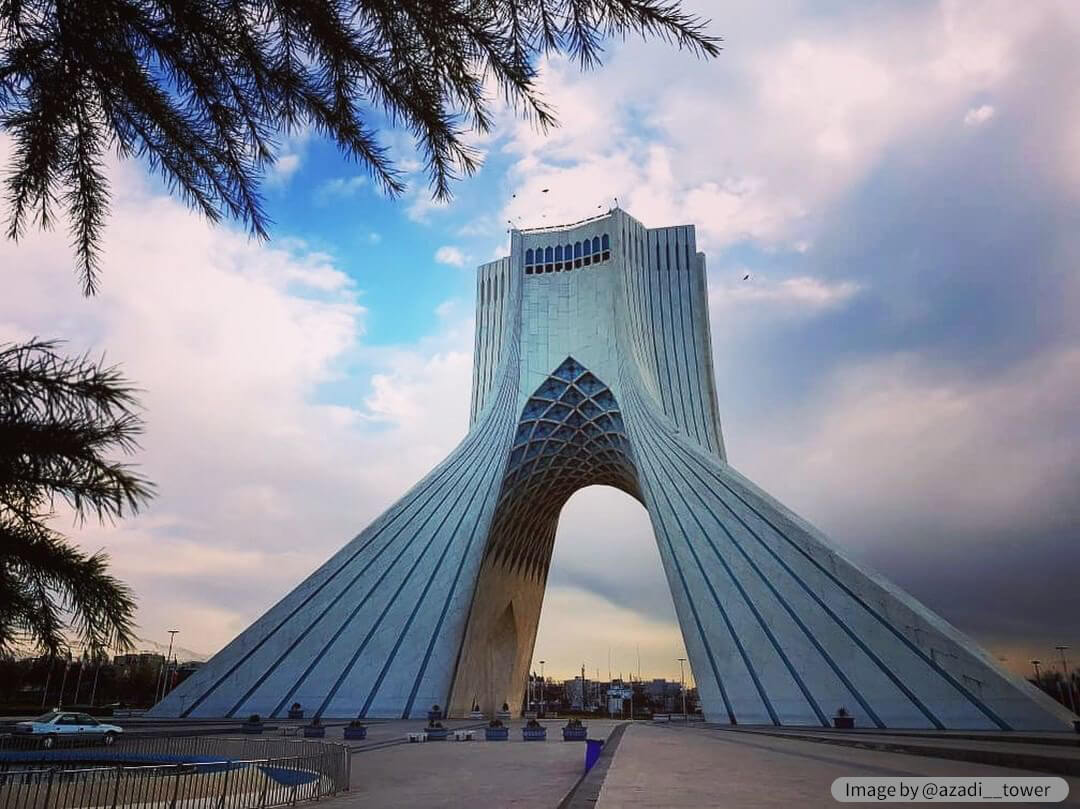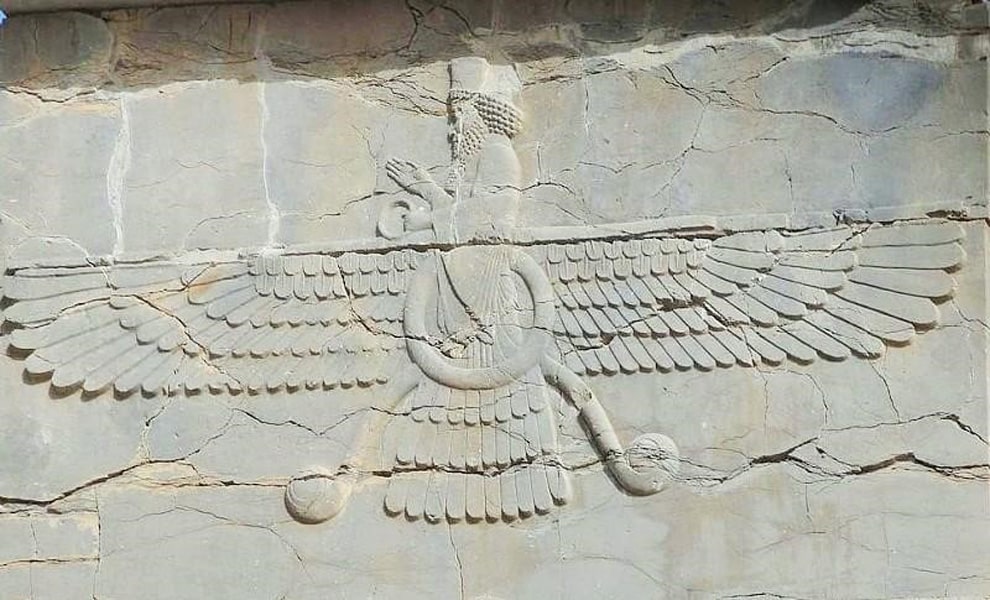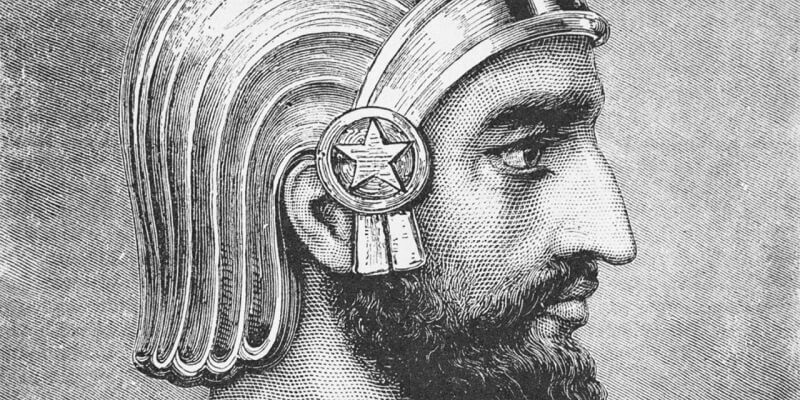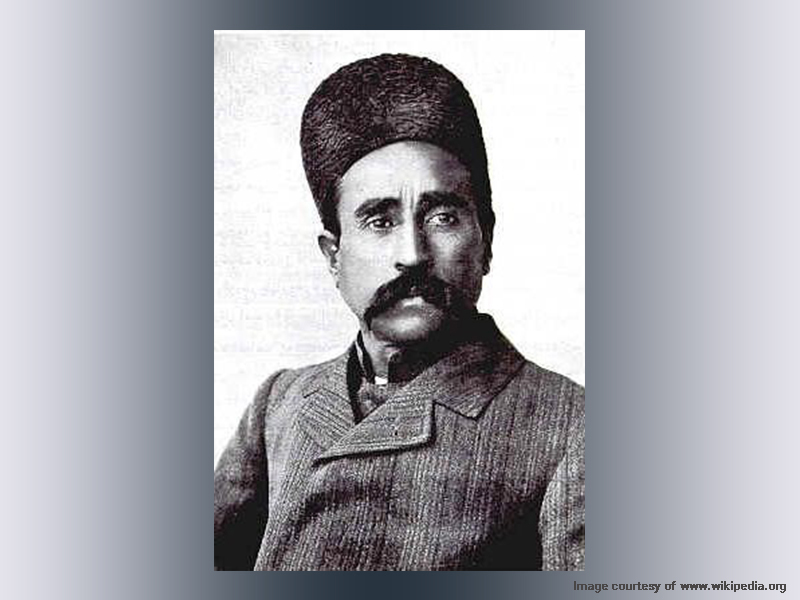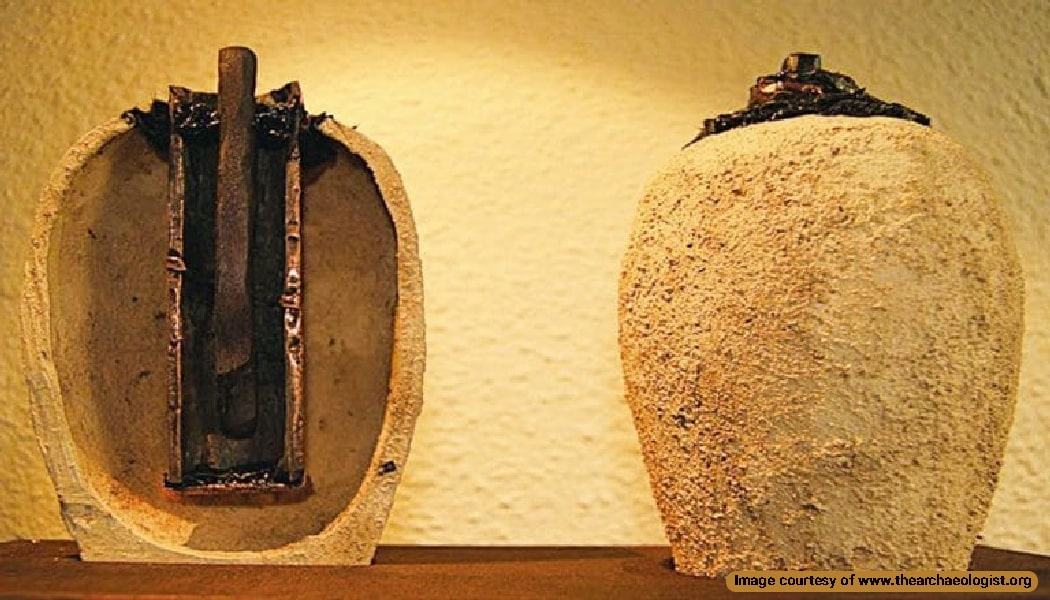
The Zandieh Dynasty, founded by Karim Khan Zand, gained power in Iran after the death of Nader and the fall of the Afsharids. He opened a new chapter in Iranian history, ruling over Iran for 45 years. In the relatively short period of the Zandieh government’s rule, the nation experienced an era of peace and stability across the borders. Led by Karim Khan Zand (self-proclaimed Vakil ol-Ra’aya, the common people’s deputy), they managed to seize control of different provinces through 16 years of skirmishes, before the rise of Qajar.
Rise of the Zand Era
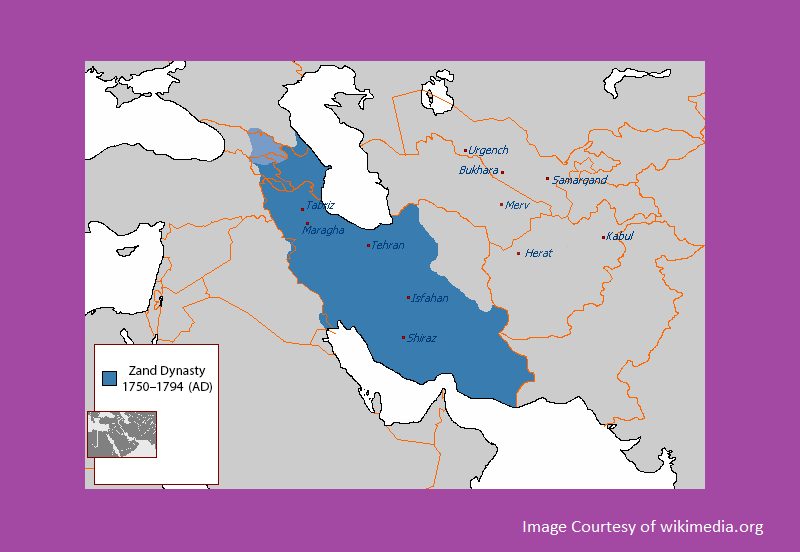
Karimkhan-e-Znad, who was from the Lak and Lur tribes, founded the Zand dynasty 18 years after the death of Nader Shah. He was a capable militant combating mainly against Ottoman occupiers.
The history of the Zand rulers began with Karimkhan and his dynasty lasted a short while but brought back national unity, tranquility, and some territorial integrity for the people. He called himself “Vakiloroaya” (meaning attorney of servants), not a king. He fought against all who claimed power, deposed the last inefficient Safavid ruler because of his failures, and founded the Zand dynasty in Shiraz.
Shiraz flourished under his rule very much. He had citadels, bazaars, bathhouses, mosques, etc constructed. He also tried to establish security and justice and promoted trade and agriculture. Because of his character, one can refer to him as a fatherly character in governing, a sense of humor, respect for the learned, a lack of bias in religion, and a lack of belief in superstitions.
Role of Karim Khan in Zandieh History
The king of the dynasty, Karim Khan, was the chief of the Zand tribe and a commander of Nader Shah’s army. He was originally from Lur descent, and his ancestors were from a Lak tribe. The Laks were a Lur tribe of Kurdish origins, whose Laki dialect is considered a branch of the Kurdish language. He had fought against the Ottoman forces in numerous battles and was considered a wise and insightful leader. When Nader Shah was murdered, the country fell into chaos. Many military commanders from Nader’s army revolted. To prevent the collapse of the central government, Karim Khan returned from the battles with the Ottomans and helped Ismail III claim the throne.
Before this act, he made a pact with two Bakhtiari tribal chiefs Abul Fateh Khan (ruler of Isfahan) and Ali Mardan Khan, and they vowed not to move against the king. In doing so, Ali Mardan Khan was appointed Regent, and Karim Khan became the army general.
After the pact, Karim Khan deployed the army to the western territories and engaged in several battles. Ali Mardan Khan used his absence as an opportunity to murder Abul Fateh Khan, appointed his uncle in his place, and proclaimed himself the king of Iran. After hearing the news, Karim Khan arrived in Isfahan and captured the city to oppose Ali Mardan Khan. Ali Mardan, who was in control of Shiraz, launched a military campaign toward Isfahan but lost the ensuing battle. After this victory, tribal chiefs supported Karim Khan to form a new government.
After 16 years of battling the opposition, he gained control over central, northern, western, and southern Iran. His brother, Sadeq Khan, captured Basrah from the Ottoman grasp, leading to Iran’s dominion over Arvand Rud (Shatt al-Arab), Bahrain, and southern islands in the Persian Gulf.
At the zenith of his rule, Karim Khan had control over nearly all of Iran but refused coronation and the title of king. To show his intent to serve the people, he called himself Vakil ol-Ra’aya (the common people’s deputy). At first, he chose Malayer as the temporary Capital, but after subsequent battles and total control over the country, he moved the Capital to Shiraz. After suppressing the revolts, a remnant of the Afsharid dynasty, Shahrokh, still considered himself king. Karim Khan granted him the rule of Khorasan. This act ensured national unity and allowed the people to live in peace for a few years.
During his reign, Karim Khan built magnificent buildings in Shiraz which are considered cultural heritage landmarks today. Arg of Karim Khan, Vakil Historical Bath, and Vakil Bazaar are some of these architectural accomplishments. Vakil Mosque is another masterpiece of architecture from the Zand period. Karim Khan was a mild-mannered and respected ruler who engaged with other rulers and social figures without superstitious beliefs and religious prejudice. He was a kind father figure, establishing social justice in an uncivilized time. During his rule, the country prospered and grew.
Karim Khan’s Achievements During Zandieh Rule
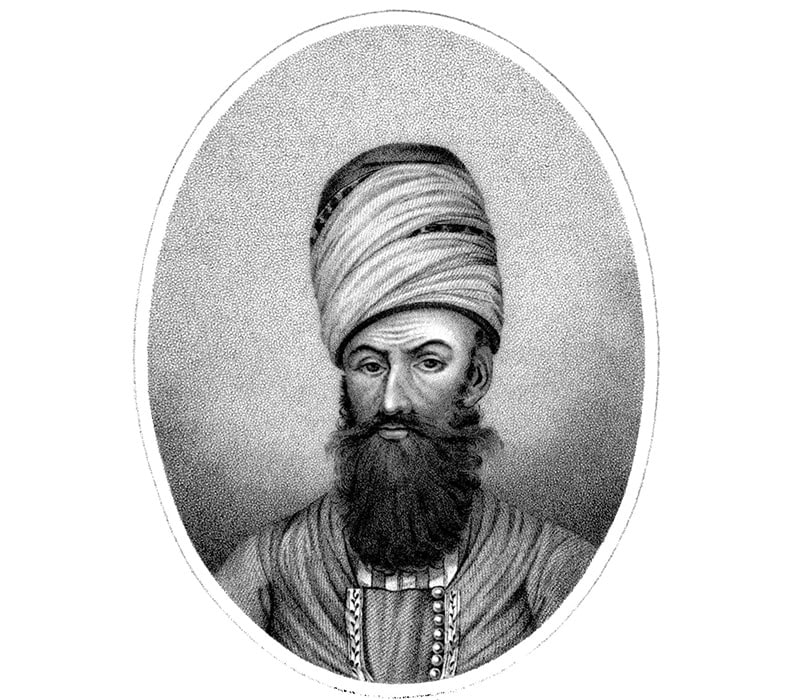
Karim Khan, the son of Inaq Khan Zand, was a tribal chief and military commander of Nader Shah’s army. After gaining control, he displayed proper management tactics and wisdom to help Iran flourish. He refused the title of king and chose to proclaim himself the people’s deputy. Many believe that after the Arab invasion of Iran, Vakil al-Raaya was the most benevolent ruler in Iran who treated everyone with respect.
The achievements of the Zand dynasty in their short-lived over Iran are considerable:
- Karim Khan managed to take control of territories in northern, central, western, and even southern Iran.
- In 16 years of constant fighting, he defeated Azad Khan Afghan and Mohammad Hassan Qajar and was recognized as the unopposed ruler in south, west, and central Iran.
- During the reign of Karim Khan, Iran’s borders included as far as Bahrain and the entirety of Arvand Rud.
Vakil ol-Ra’aya believed that the British had no good intentions for Iran, and their goal in courting Iran was to turn it into a colony like India.
Zandieh Rulers After Karim Khan
The Zand dynasty did not last long after Karim Khan, because his death caused a great deal of chaos in the country, and his successors fought over the throne in his absence. Such divisions led to the rise of the Qajar dynasty, especially Agha Mohammad Khan Qajar. He was able to kill the last Zand ruler and claim the throne. The Zand rulers after Karim Khan include:
Abol-Fath Khan
Karim Khan ruled over the nation for 30 years. As the founder of the Zandieh dynasty, he appointed his eldest son Abol-Fath as his successor. Two elders from the Zand tribe supported his coronation but were slaughtered by Zaki Khan. Zaki Khan held the most power and Abol-Fath was king only in name. He was the Zand ruler for only three months.
Mohammad Ali Khan Zand
Karim Khan’s youngest son was declared king by Zaki Khan. He was also in power for three months.
Sadeq Khan Zand
Following the chaos of the civil war, Karim Khan’s brother, Sadeq Khan used the opportunity to invade Shiraz from Kerman and took power after About-Father’s death. He was in power for three years, and the cause of his death is unknown.
Ali-Morad Khan Zand
Ali-Morad Khan was tasked by Zaki Khan to stop the Qajar uprising in Mazandaran. His abandonment of Shiraz led to the invasion by Sadeq Khan. After the fall of Shiraz, Ali-Morad captured Isfahan and declared himself the Zand king. His plans to seek help from Russia to gain support against the Qajar in exchange for forfeiting land claims was the first example of foreign involvement in issues of succession and paved the way for further meddling, which proved disastrous in Iran’s history.
Despite his efforts and multiple military campaigns, Ali Morad Khan failed to thwart the Qajar uprising and lost the support of the Zand elders. He died in Isfahan, leaving the throne up for grabs by Sadeq Khan’s son.
Jafar Khan
He was the son of Sadeq Khan and rose to power in Isfahan amid the Qajar military campaign to capture Shiraz. His army was defeated near Isfahan, and he fled to Shiraz. After the Qajar ransacked the city and returned to the north, Jafar Khan managed to capture the city again. Upon hearing the news, Agha Mohammad Khan marched toward Isfahan, leading to another retreat to Shiraz by Jafar Khan. This happened once again, and Jafar Khan stayed in Shiraz until he was murdered by Ali-Morad Khan’s son.
Sayed Morad Khan
The son of Ali-Morad, he killed the previous ruler and declared himself king of Shiraz. His reign was short, lasting only four months. He surrendered to Jafar Khan’s son and was executed in retaliation for the murder of Jafar Khan.
Lotf Ali Khan
After capturing Shiraz and killing the previous king, Lotf Ali’s victory was short-lived. Agha Mohammad Khan Qajar marched to Shiraz and defeated the Zand army outside the city. However, the city’s strong fortifications managed to repel the Qajar army, who retreated to Tehran. He was betrayed by the city’s Kalantar (mayor) who mutinied after he left to capture Isfahan and presented the city to the Qajar. Abandoned by most of his army, he went to Bushehr and defeated the local ruler.
After raising a small army, he managed to recapture Shiraz. However, Agha Mohammad Khan attacked Shiraz with 30-40 thousand men and drove Lotf Ali Khan to Kerman. Agha Mohammad Khan laid siege to Kerman and Lotf Ali escaped to Bam. The Bam ruler surrendered him to Agha Mohammad Khan, who took him to Tehran, tortured and eventually killed him. He ruled for 6 years as the last king of the Zandieh dynasty.
Fall of Zandieh Dynasty
The short period of Zandieh’s rule was an eventful era in Iran’s history. Iran maintained friendly diplomatic relations with foreign nations during this time. The Zand had trade ties with the British Empire but did not allow the colonization of Iran. The overall state of common people was better in comparison to previous periods. He led a simple life and spent most of the nation’s wealth to create better conditions for the people.
One of the important events during the rule of Karim Khan Zand and Zandieh’s history in Iran was the Persian plague epidemic of 1772–1773, an outbreak of the bubonic plague that killed 2 million Iranians. After Karim Khan’s death, people’s livelihood declined. There were rumors of the end of the dynasty. During the reign of the last Zandieh king, Lotf Ali Khan, the Qajar claimed power and created chaos in the nation.
Agha Mohammad Khan’s treatment of an imprisoned Lotf Ali Khan was reportedly horrible. He was tortured for a month, blinded, and ultimately choked to death. To quote John Malcolm in The History of Persia:
“The page of history would be stained by a recital of the indignities offered to the royal captive.”
Agha Mohammad Khan was castrated in his childhood by the order of Karim Khan Zand. He held a grudge and ordered the castration and torture of Lotf Ali Khan’s family after capturing them. After gaining power, he managed to capture, torture, and kill all Zand descendants. He also blinded 10,000 people in the siege of Kerman. This marked the end of the Zandieh dynasty and the brutal start of the Qajar rule.
Map of Iran During Zandieh Dynasty
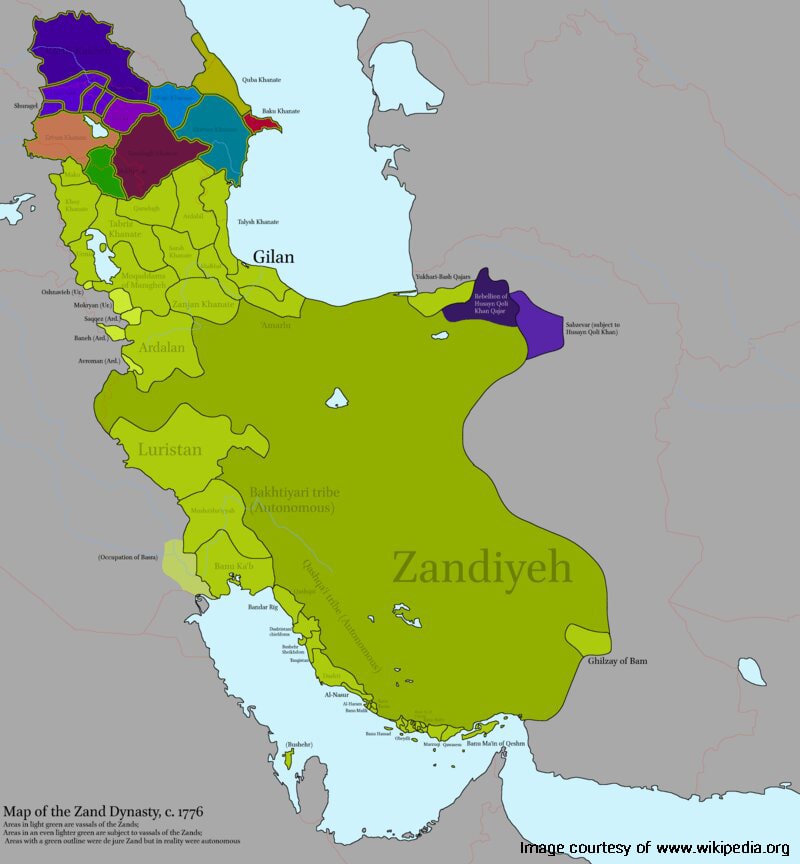
Our country’s borders have shifted extensively throughout history, and the map of Iran has transformed in every period. For example, present-day provinces such as Khorasan and Sistan va Baluchestan were not part of the Zandieh territories.
After the fall of the Afsharid dynasty, Karim Khan was able to secure central and southern Iran. Then, he expanded his territory, adding all present-day Iranian provinces except the mentioned provinces. In that period, some Zand tribal chiefs had autonomous rule over regions in present-day Armenia, the Republic of Azerbaijan, and Georgia. Therefore, these territories were part of Zand borders. In 1775, Sadeq Khan invaded Ottoman territories and captured Basrah, adding to Iranian lands. Therefore, Iran controlled all of Arvand Rud. However, the Ottomans managed to retake the land shortly after.
In addition, Al-e Mazkur was a tribe that ruled over Bahrain Island on behalf of the Zandieh dynasty, making it an official part of the Zand territories.
Learn More About Iranian Dynasties
Destination Iran provides information about Iranian history in our various blog posts. In this blog post, we went over the history of the Zandieh dynasty, their territories, and eventful succession battles. Karim Khan Zand, the most prominent figure in Zandieh’s history, was a simple and wise man who chose the title of Vakil ol-Ra’aya instead of a king. The Zand dynasty ruled for 45 years, but in this short time, they developed the city of Shiraz, helped the economy flourish, and improved social conditions in Iran. Today, many travelers visit Shiraz to view the architectural attractions from the Zandieh period.






